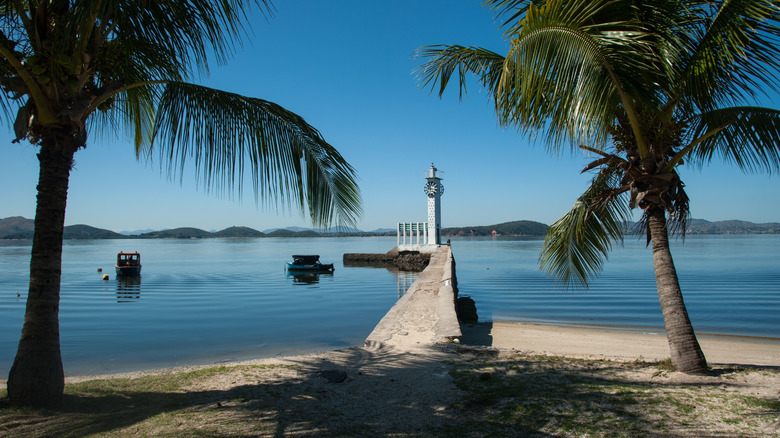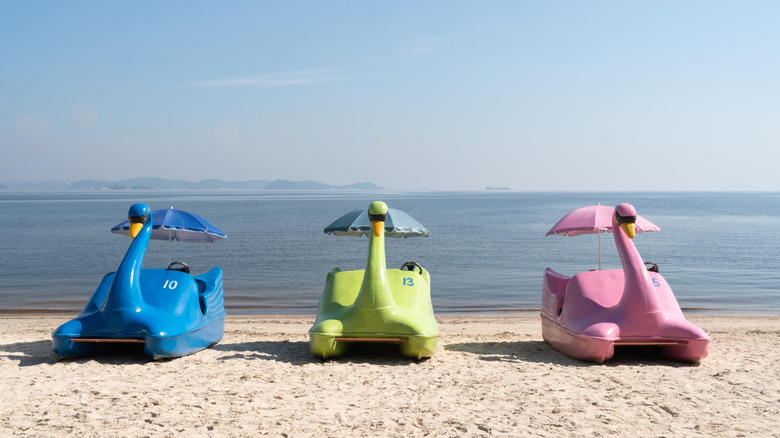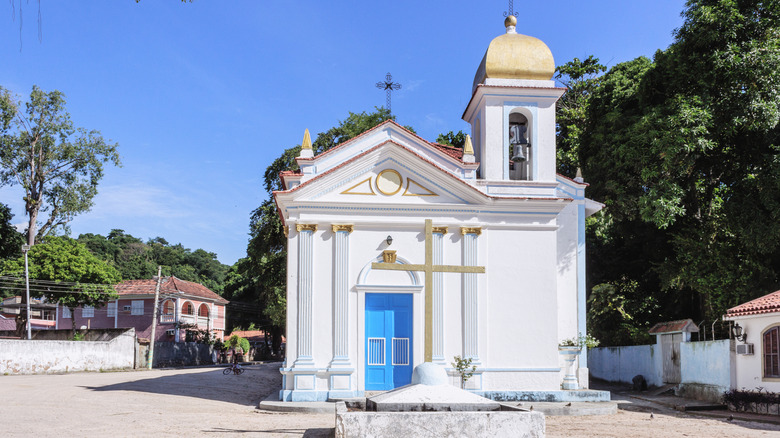A Secret Island In Bustling Rio De Janeiro Is A Tranquil Car-Free Escape Full Of Breathtaking Beaches
Rio de Janeiro is undoubtedly one of the most beautiful places to visit in South America, with its world-famous beaches like Copacabana Beach and Ipanema Beach, where people clap for the sunsets that descend behind the Two Brothers hills. The one potential frustration is that, since everyone wants a taste of this beauty, the city can get impassibly crowded, between its beachgoers and cars trying to maneuver through the congested, traffic-heavy streets. When you need a break from the honking and hordes, the Brazilian municipality does have some quiet, secret getaways, one of which is the sandy, car-free Ilha de Paquetá.
Unlike the rest of Rio, cars aren't allowed at Ilha de Paquetá (other than ambulances and garbage trucks). This allows visitors to explore the island's colonial architecture, soft sand beaches, and shop-lined, unpaved main street in peace, by foot, bike, or electric cart. Some travelers have even referred to Ilha da Paquetá as one of Rio's best-kept secrets, not to mention it's a breeze to visit. You can get to the island by first flying into Rio de Janeiro-Galeão International Airport. Then, from Rio, ferries run every couple of hours between Praça XV (in Rio's center) to Ilha de Paquetá, each ride taking about 50 minutes.
Ilha de Paquetá's quiet beaches and viewpoints
A good idea for exploring Ilha de Paquetá's landscape is to rent a bike, like the locals, and go for a ride through the subtropical greenery. The beaches around the island are interesting — specked with boulders that crest out of the water, full of wildlife, and docked with colorful fishing boats. On the west side of the island, you'll find flat, expansive shores, perfect for sunbathing, while the east shore's beaches are cozier and have rocky terrain. The bay that the island skirts is notably polluted, so not all of its beaches are safe for swimming — the city of Rio keeps its Praia Limpa website updated with which beaches have good enough water quality to swim in.
At the island's longest beach, Praia José Bonifácio, which is typically fine to swim in, you'll see colorful swan pedal boats along the shore. By the beach Praia das Gaivotas, there's a modernist, functioning lighthouse at the end of a pier. On the south side of the island, head to Parque Darke de Mattos, an expansive park lined with palm trees. It has a viewing point at the top of a hill, where an abandoned fort sits, with tunnels you can climb through. As you explore the island, look out for local fauna, too, including marmosets and seabirds.
Pastel walls and seafood stalls around Ilha de Paquetá
Ilha da Paquetá includes a mix of well-kept and more rundown areas, though the overall atmosphere remains peaceful and welcoming. At one time, the island served an important role as an agricultural producer during the colonial period and was later even home to royal exiles. Its colonial architecture reflects this history, painted in striking colors, like the bright blue and white São Roque Chapel. Stop at the town's Casa de Artes Paquetá, a cultural center that hosts art workshops and has a charming café. Another unique spot to walk by on the island is the home of Pedro Bruno, a Brazilian painter and poet who lived here — then take an eight-minute walk to one of the island's most unusual landmarks, its bird cemetery.
As for food, you'll find lots of seafood stalls around the beaches. For somewhere to sit down and eat, check out Zeca's, which serves classic Brazilian dishes like escondidinho (a potpie with shrimp, cheese, and potatoes) as well as pizza. Another option for a laidback bite is Pastelaria do Lido, which has 4.3 stars on Google Reviews and mainly serves baked goods, though you can come by for a beer, too. Grab a drink, sit on the beach, and watch the sunset over Sugarloaf Mountain, and you'll see why Ilha de Paquetá is one of the best hidden destinations of Rio de Janeiro.


